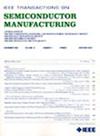Defect Detection of Photovoltaic Panels to Suppress Endogenous Shift Phenomenon
IF 2.3
3区 工程技术
Q2 ENGINEERING, ELECTRICAL & ELECTRONIC
引用次数: 0
Abstract
Efficient and intelligent surface defect detection of photovoltaic modules is crucial for improving the quality of photovoltaic modules and ensuring the reliable operation of large-scale infrastructure. However, the scenario characteristics of data distribution deviation make the construction of defect detection models for open world scenarios such as photovoltaic manufacturing and power plant inspections a challenge. Therefore, we propose the Gather and Distribute Domain shift Suppression Network. It adopts a single domain generalized method that is completely independent of the test samples to address the problem of distribution shift. Using a one-stage network as the baseline network breaks through the limitations of traditional domain generalization methods that typically use two-stage networks. It not only balances detection accuracy and speed but also simplifies the model deployment and application process. The network first employs the DeepSpine module to capture a wider range of contextual information. By concatenating and aligning multi-scale channel features, it effectively suppresses background style shifts. Building upon this, the Gather and Distribute Module performs cross layer interactive learning on multi-scale channel features. The multi-level features and semantic dependencies learned enhance the localization and recognition ability of target defects, thereby achieving the suppression of defect instance shift. Furthermore, we utilizes normalized Wasserstein distance for similarity measurement, reducing measurement errors caused by bounding box position deviations. We conducted a comprehensive evaluation of our network on the Electroluminescence Endogenous Shift Dataset and Photovoltaic Inspection Infrared Dataset. In scenarios with three production lines and four heights on two datasets, the detection accuracy of GDDS reached 91.2%, 82.3%, 79.9%, and 92.8%, 82.7%, 77.2%, and 69.2%, respectively. The experimental results showed that our method can adapt to defect detection in open world scenarios faster and better than other state-of-the-art methods.抑制内生位移现象的光伏板缺陷检测
高效、智能的光伏组件表面缺陷检测对于提高光伏组件质量,保证大型基础设施的可靠运行至关重要。然而,数据分布偏差的场景特征使得光伏制造、电站检测等开放世界场景的缺陷检测模型的构建面临挑战。因此,我们提出了聚集和分布域移抑制网络。它采用完全独立于测试样本的单域广义方法来解决分布移位问题。采用单阶段网络作为基准网络,突破了传统领域泛化方法通常采用两阶段网络的局限性。它不仅平衡了检测精度和速度,而且简化了模型部署和应用过程。该网络首先使用DeepSpine模块来捕获更广泛的上下文信息。通过对多尺度通道特征的拼接和对齐,有效地抑制了背景样式的偏移。在此基础上,收集和分发模块在多尺度通道特征上执行跨层交互式学习。学习到的多层次特征和语义依赖增强了对目标缺陷的定位和识别能力,从而实现对缺陷实例移位的抑制。此外,我们利用归一化Wasserstein距离进行相似性度量,减少了由边界框位置偏差引起的度量误差。我们对电致发光内生位移数据集和光伏检测红外数据集进行了综合评价。在2个数据集的3条生产线4个高度场景下,GDDS的检测准确率分别达到91.2%、82.3%、79.9%和92.8%、82.7%、77.2%、69.2%。实验结果表明,该方法可以更快更好地适应开放世界场景下的缺陷检测。
本文章由计算机程序翻译,如有差异,请以英文原文为准。
求助全文
约1分钟内获得全文
求助全文
来源期刊

IEEE Transactions on Semiconductor Manufacturing
工程技术-工程:电子与电气
CiteScore
5.20
自引率
11.10%
发文量
101
审稿时长
3.3 months
期刊介绍:
The IEEE Transactions on Semiconductor Manufacturing addresses the challenging problems of manufacturing complex microelectronic components, especially very large scale integrated circuits (VLSI). Manufacturing these products requires precision micropatterning, precise control of materials properties, ultraclean work environments, and complex interactions of chemical, physical, electrical and mechanical processes.
 求助内容:
求助内容: 应助结果提醒方式:
应助结果提醒方式:


